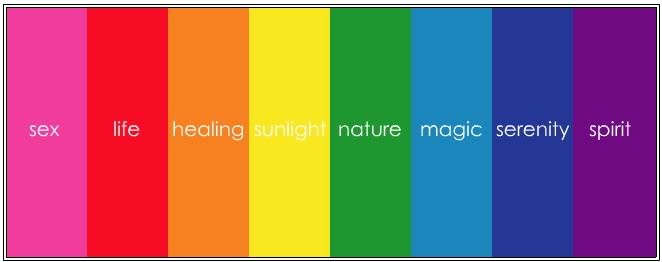The Iconic Colors of Gilbert Baker
.png)
One of the most iconic symbols of the LGBT+ movement is the multi-color Rainbow Flag. During Pride Month, an even brighter spotlight is placed on the Rainbow Flag when it can be seen all over town, in parades, at sporting events, and on billboards. Many businesses take the theme of the Rainbow Flag and modify their existing logos to incorporate the rainbow colors in support of Pride Month. But there is a personal side to the iconic flag: the story of Gilbert Baker, the self-proclaimed “gay Betsy Ross,” who invented the traditional Gay Pride Flag.
Gilbert Baker was an artist, designer, and activist. Baker was born on June 2, 1951, and was raised in Kansas. From a young age, Baker enjoyed art and fashion, but he suffered a difficult childhood growing up in socially-conservative Kansas. While serving in the United States Army, Baker was stationed in San Francisco as a medic. Even though the gay rights movement was at its infancy in the early 1970s, Baker had the courage to live as an openly gay man.
After his honorable discharge from the military, Baker began using his artistic skills for anti-war and pro-gay activism. In 1978, other gay activists (including Harvey Milk, who was California’s first openly gay man to be elected to public office) suggested to Baker that he create a positive and inclusive symbol for the gay rights movement. Baker agreed and sought to replace the inverted pink triangle, an image used by the Nazis during World War II to identify and further dehumanize gay men.
According to a quote found on the Gilbert Baker Estate’s website (link: Rainbow Flag: Origin Story | Gilbert Baker), Baker explains how he chose the design for the flag:
A Rainbow Flag was a conscious choice, natural and necessary. The rainbow came from earliest recorded history as a symbol of hope. In the Book of Genesis, it appeared as proof of a covenant between God and all living creatures. It was also found in Chinese, Egyptian and Native American history. A Rainbow Flag would be our modern alternative to the pink triangle. Now the rioters who claimed their freedom at the Stonewall Bar in 1969 would have their own symbol of liberation.
The original Flag designed by Baker (as assisted by volunteers who helped him hand-dye and stitch the flag) had 8 colors with the following meanings:

Apparently, because hot pink fabric was difficult to find, Baker decided to drop that stripe and, subsequently, the turquoise stipe was removed to address a practical issue that occurred when one color of the flag was obstructed when the flag was hung vertically from lamp posts in San Francisco.
Baker believed that the Rainbow Flag belonged to the gay community, so he made the decision not to trademark the symbol. He wanted the flag to be actively used as a prominent symbol for the LGBT+ community around the world.
In his 40s, Baker moved to New York City, where he continued his activism. For the 25th anniversary of his creation of the Rainbow Flag, he created a huge Rainbow Flag stretching from the Gulf of Mexico to the Atlantic Ocean in Key West.
Baker, who lived to the age of 65, will always be remembered as the creator of the Rainbow Flag. At the time of his death, LGBT Network CEO Dr. David Kilmnick called Baker “a pioneer in the gay rights movement” and noted that Baker “leaves us with a symbol of unity and pride that will carry on forever.”
